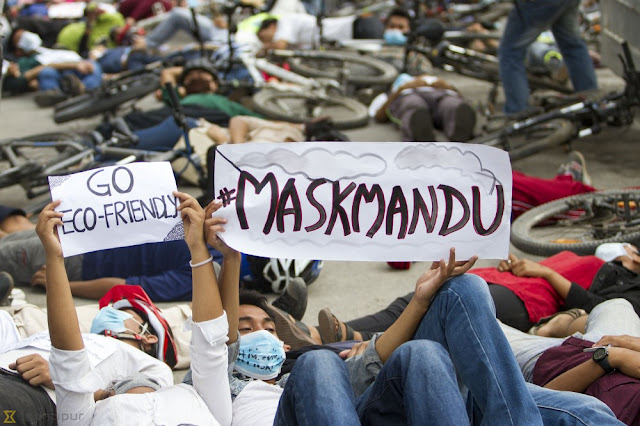- Get link
- X
- Other Apps
- Get link
- X
- Other Apps
It is easy to tag Kathmandu as “Dustmandu” or “Maskmandu” which merely illustrates the tip of the iceberg. But underneath, a huge white core is hidden and we must responsively act before it is too late. Just imagine, one little spark of a pandemic can cause a huge loss.
Categorically, it gives me no pleasure as a former soldier to write on the issue of pollution and environment, simply because I hold no expertise on these topics. However, the continuous agony of people who are left helpless and the prolonged exhibition of our system’s inability to govern and manage our cities has prompted me to lift my pen. My prognosis could be direct but at the outset, let me clarify, I am writing selflessly. Personally, I am accustomed to the Kathmandu Valley for more than half a century as I was born on this very soil.
Though I spent my childhood days in the beautiful Eastern Hills of Nepal, I guaranty that Kathmandu herself was equally pristine and tranquil until a few decades ago. But I am pretty sure people’s passion for Kathmandu is still the same as in Danny Denzongp’s song that alludes “man ko rahar kanchi lai ghumaune kathmandu sahar”, and that passion is yet not fossilized. Kathmandu must find a creative and innovative solution to overcome the issue of pollution from its root.
Some 25 years ago a four year old boy fingered me and pointed to a piece of napkin I had just dropped on the side walk near the Fisherman Beach in Tel Aviv, Israel. He spoke in Hebrew but I could figure out his awareness and command pointing me towards a huge roadside dustbin.
A quarter of a century later and a month earlier, I had to witness an educated looking couple in a motorbike intentionally a hurling bag full of household garbage under the slope near my hometown Sanothimi, and vanishing. This was a typical public place, under the jurisdiction of the District Forest Office, Bhaktapur and about 100 yards to the east of its premise.
These two contradictory scenarios demonstrate paramount social factors like awareness, responsiveness, moral duties and management. In the case of Tel Aviv, the four year old boy executed all three duties except management, which he must have presumed to be the city authority. In the case of my hometown one can notice an inherent 360° vacuum.
Looking at the mirror each one of us needs to ask a question ourselves, “Do I really love Kathmandu?”. If the answer is yes we must strive to make it livable. Time has come for all of us to fulfill the duties that I saw a four year old boy executing some 25 years ago in Israel. Let’s be responsive, let’s open a new discourse and say “no” to pollution.
Firstly, that discourse, in reality, has three “TIONs” which have systematically looted the true identity of Kathmandu. These are namely urbanization, motorization and corruption. Without going into specifics, unplanned urbanization and unmanaged motorization are at the forefront in polluting Kathmandu Valley.
Secondly, since uncontrolled urbanization has engulfed cities like Kathmandu beyond its limit, we must purposefully reverse this vicious cycle of rush to the cities by decentralizing facilities to every part of Nepal. People will happily return to their lovely villages that could end this long running industry of misery.
Thirdly, perhaps mostly unnoticed yet not sufficiently checked, corruption alone is the key factor that compromises fulfillment of the required standards in every sector stipulated by the laws and rules. Therefore, we need to take steps that ultimately would cause pollution to vanish. We have seen complex, huge and mega cities around the globe thriving, and the Kathmandu Valley alone must not remain an exception. Fourthly, pollution is more vicious than modern-day terrorism. Leave it unchecked and it will strangulate every living thing on this planet. So all who love or live in the Kathmandu Valley must work hand in hand to deal with and eradicate pollution.
Finally, leaders, you have given us a Federal Democratic Republic of Nepal and people are sure that you will award us with many more in the years to come. But for now, please give back our Kathmandu Valley “curtained by fog and mist……blanketed by lush green hills and roofed by a clear blue sky”, a vibrant and smart Kathmandu valley. Do extricate us from this dust bowl of pollution. Above all, do something to curb this urbanization, motorization and corruption.

Comments
Post a Comment